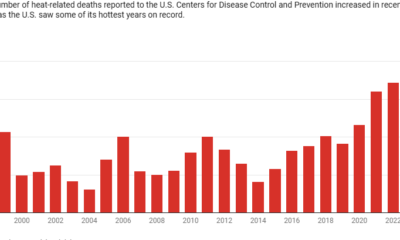analytics
Essential Email Marketing Metrics: Your 7-Point Cheat Sheet for Success

With the increasing reliance on digital interactions, building and maintaining an email list has become crucial for businesses. However, the true challenge lies in ensuring these emails engage subscribers effectively.
Email metrics serve as essential indicators of the success of your campaigns. Here, we focus on seven key metrics divided into three categories: deliverability, engagement, and list health.
Deliverability metrics help in assessing whether your emails reach the inboxes of your subscribers. Two important metrics in this category are bounce rate and complaint rate.
Bounce Rate
The bounce rate measures the percentage of emails that fail to reach recipients’ inboxes. Bounce rates can be categorized into soft bounces (temporary issues) and hard bounces (permanent issues). High bounce rates can lead to temporary list suspension from some email service providers (ESPs).
To reduce bounce rates:
- Regularly clean your email list to remove invalid addresses.
- Use a double opt-in method to confirm email addresses.
- Segment your list for targeted content.
Complaint Rate
The complaint rate indicates the number of subscribers who marked your email as spam. High complaint rates can harm your sender reputation and get you suspended by your ESP.
To lower your complaint rate:
- Provide clear and easy unsubscribe options.
- Send relevant and valuable content.
- Remove unengaged subscribers regularly.
Engagement metrics reflect how subscribers interact with your email content. Open rate and click-through rate (CTR) are the two metrics in this category.
Open Rate
Open rate measures how many subscribers opened your email. This can be influenced by subject lines, sender name, and mailing frequency. A good baseline for open rates is 20-30%.
To boost open rates:
- Craft compelling subject lines.
- Use a recognizable sender name.
- Send emails at optimal times.
Click-Through Rate (CTR)
CTR measures the percentage of subscribers who clicked on a link in your email, indicating the email’s engagement level. Tracking heat maps and real-time data can help optimize this metric.
To improve CTR:
- Keep CTAs clear and compelling.
- Use visually appealing templates.
- Segment your list for targeted content.
List health metrics measure the overall engagement and interest level of your email subscribers. Important metrics here include list growth rate, unsubscribe rate, and inactive subscribers.
List Growth Rate
This metric shows how quickly your email list is expanding. A steady growth rate is essential for maintaining an engaged audience.
To boost list growth rate:
- Add sign-up forms on your website and social media.
- Encourage referrals from current subscribers.
- Run contests or giveaways.
Unsubscribe Rate
This metric tracks how many subscribers opt out of your list. A high unsubscribe rate could indicate issues with content relevance or email frequency.
To reduce unsubscribe rates:
- Send relevant content.
- Allow preference management for subscribers.
- Monitor email frequency.
Inactive or Unengaged Subscribers
Subscribers who do not interact with your emails can negatively impact your engagement metrics. Regularly removing these inactive subscribers is essential for a healthy list.
To re-engage inactive subscribers:
- Send re-engagement campaigns.
- Offer exclusive content.
- Remove inactive subscribers periodically.
Email marketing is a dynamic process, allowing real-time monitoring and adjustment to optimize results. Focusing on these seven key metrics can improve the overall effectiveness of your email marketing strategy.


















